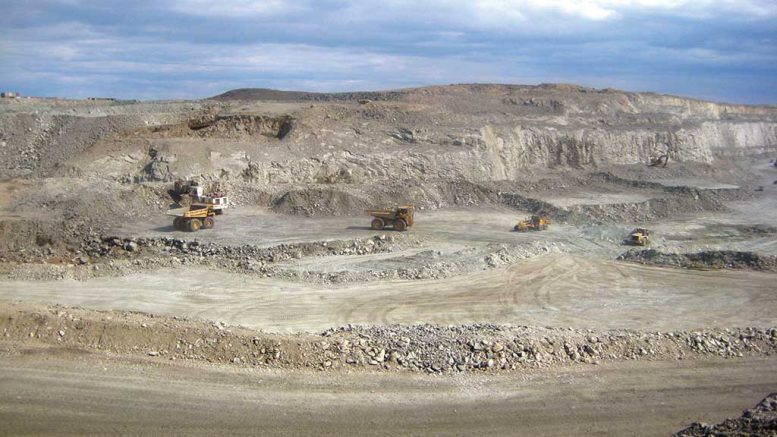The ability to access and replace reserves, including access to new projects, was the top perceived risk in the industry in 2016, moving up from second place in 2015 to displace commodity price risk, according to KPMG’s recent Insights into Mining survey.
Since 2014, KPMG has asked mining executives to rank 30 perceived risks to get a better idea of the challenges some of Canada’s largest miners face. The 2016 survey — conducted last September — polled 33 leading mining executives. KPMG used the feedback to compile the top-10 industry risks and assess multi-year trends.
The top two perceived risks in 2016 — replacing reserves and commodity price risk — were the same as in 2015. The industry has no control over commodity prices and due to the consumptive nature of the business will always have to replenish reserves, Heather Cheeseman, coauthor of the survey, says in an interview.

Top 10 perceived risks in 2016 versus 2015. Credit: KPMG.
“What was more interesting to us was the ability to access and replace reserves … [which] has had a significant increase across our survey from 2014 through to 2016. In 2014, it was tenth, and in 2016, it was for the first time number one. Every other year, commodity price risk was number one.”
That’s partly because in 2014, many companies were still in survival mode, cutting exploration and deferring capital projects amid the commodity price slump.
Given that many companies have since adapted, and that there has been a rise in commodity prices, executives are looking at how to sustain their production levels, Cheeseman says.
“Companies are doing this in a way that does not repeat some of the mistakes or at least the criticism they have had around capital spending in the past.”
The third most perceived risk in 2016 was liquidity risk, moving up from fifth place in 2015. Community relations-social licence stayed in fourth, while controlling capital costs moved into fifth — up four positions since 2015.
Despite higher commodity prices, executives are maintaining liquidity, while managing costs and earning the social licence to operate, Cheeseman and coauthor Justin Chartrand write in the March 3 report.
“The focus on accessing new projects may have also led to increased risk of controlling capital costs, as companies look ahead at the ever-present risk of developing these projects on time and one budget,” they add.

Assessing multi-year trends in perceived risks. Credit: KPMG.
Resource nationalism was 2016’s biggest mover, coming in at sixth, up from 11th in 2015. Cheeseman suspects that executives are becoming more concerned about resource nationalism as political and economic uncertainty grows.
“If you look at some of the events like Brexit, the U.S. election and President Trump, there are lots of indications that different countries are maybe looking inwards in terms of protectionist-type strategies, and that sort of thing. Those are stable countries, and [often] mining occurs in parts of the world, where the governments are traditionally known to be more unstable or less consistent in how they apply policies.
“For mining, there could be nothing worse than if your project gets nationalized and you no longer have access to it. It’s a company killer.”
The risk of controlling operating costs came in seventh — the same as in 2015 — and down from second in 2014. Access to energy and water was eighth, up from 12th in 2015. Environmental risk dropped three spots to ninth. Health and safety risk came in tenth.
Access to energy and water is linked to the ability to replace reserves, as companies consider venturing into undeveloped regions, Cheeseman says. “It’s not just about finding the resources, it is about finding them somewhere that is mineable where you can get the water, the energy, etc. that you need. This can be difficult in some of those countries.”
Health and safety, she points out, has always been below the top 10, so its move into tenth place was insignificant.
Along with health and safety, the two additions to the top 10 in 2016 were resource nationalism and access to energy and water. Falling out of the top 10 was permitting risk, capital allocation and economic slowdown.
The top risks don’t change much year-over-year, Cheeseman says, adding that she expects most of them will continue into 2017.
“What we found interesting was looking at some of the risks that weren’t in the top 10, but are things that you are hearing a lot about these days.” For example, innovation and the risk of disruption ranked 26th in the survey.
“Those sorts of emerging risks may continue to increase on the risk ratings as we look ahead, and as companies realize that to stay competitive, they are going to need to increase automation and the use of technology in mining.”


Be the first to comment on "Ability to replenish reserves is miners’ top risk, KPMG says"